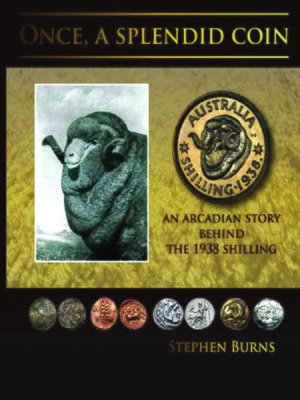
Sign up to save your library
With an OverDrive account, you can save your favorite libraries for at-a-glance information about availability. Find out more about OverDrive accounts.
Find this title in Libby, the library reading app by OverDrive.



Search for a digital library with this title
Title found at these libraries:
| Library Name | Distance |
|---|---|
| Loading... |
During the final decades of the eighteenth century, colonizing a country distant from Britain was idealised as an adventure in a pastoral utopia. The penal settlement established in New South Wales, and colloquially known as Bottney Bay was no exception. It had originally been formed to take the overflow of convicts held in the crowded gaols of Britain. Through a series of commercial expectations and coincidences, the pastoral lands of the colony became exposed as being eminently suitable for growing the Spanish-type fine wool that was then in great demand in Britain. On the western slopes and plains of the 'outback', 'squatters' bred a sheep descended from the Spanish, but critically Australian in style. The land was available, and the undemanding tasks associated with shepherding sheep suited the uneducated temperament of the convict shepherds. Just as Australia was developing her finewool industry, increased demand from the woollen mills of Yorkshire made her fortune. It was one of the great commercial coincidences of the nineteenth century. The profits from growing fine wool would see almost perfect recreations of Georgian England in Sydney, and Hobart. Out of those mercantile adventures, many poets and artists began to see Australia as the last place where the pagan ideal of that pastoral utopia, Arcadia, could survive. Enormous flocks of merino sheep would graze the previously untrodden pastures in similar style to the Biblical patriarchs of the original pastoral societies. Amidst the elemental confusion of droughts and dust storms, and leavened by flooding rains, a select group of studmasters bred merino sheep for their productive potential as well as their beauty. Breeding merino sheep had become an art form. In 1932, a merino ram from the Uardry Stud located near Hay, New South Wales was judged to be the Grand Champion at the annual Sydney Sheep Show. Uardry 0.1 was described as having 'all the characteristics of greatness in his splendidly-modeled body, his strong head and horns, and his beautiful, soft, richly-crimped fleece'. That image would be defined by George Kruger Gray on the shilling coin of the 1938 issue of a new Australian coinage, which recorded both the crowning of George VI and the sesqui-centenary of European settlement of Australia. Representing the premier industry of the country, with its deliberate nod to the past, the 1938 Shilling was once, a splendid coin.







